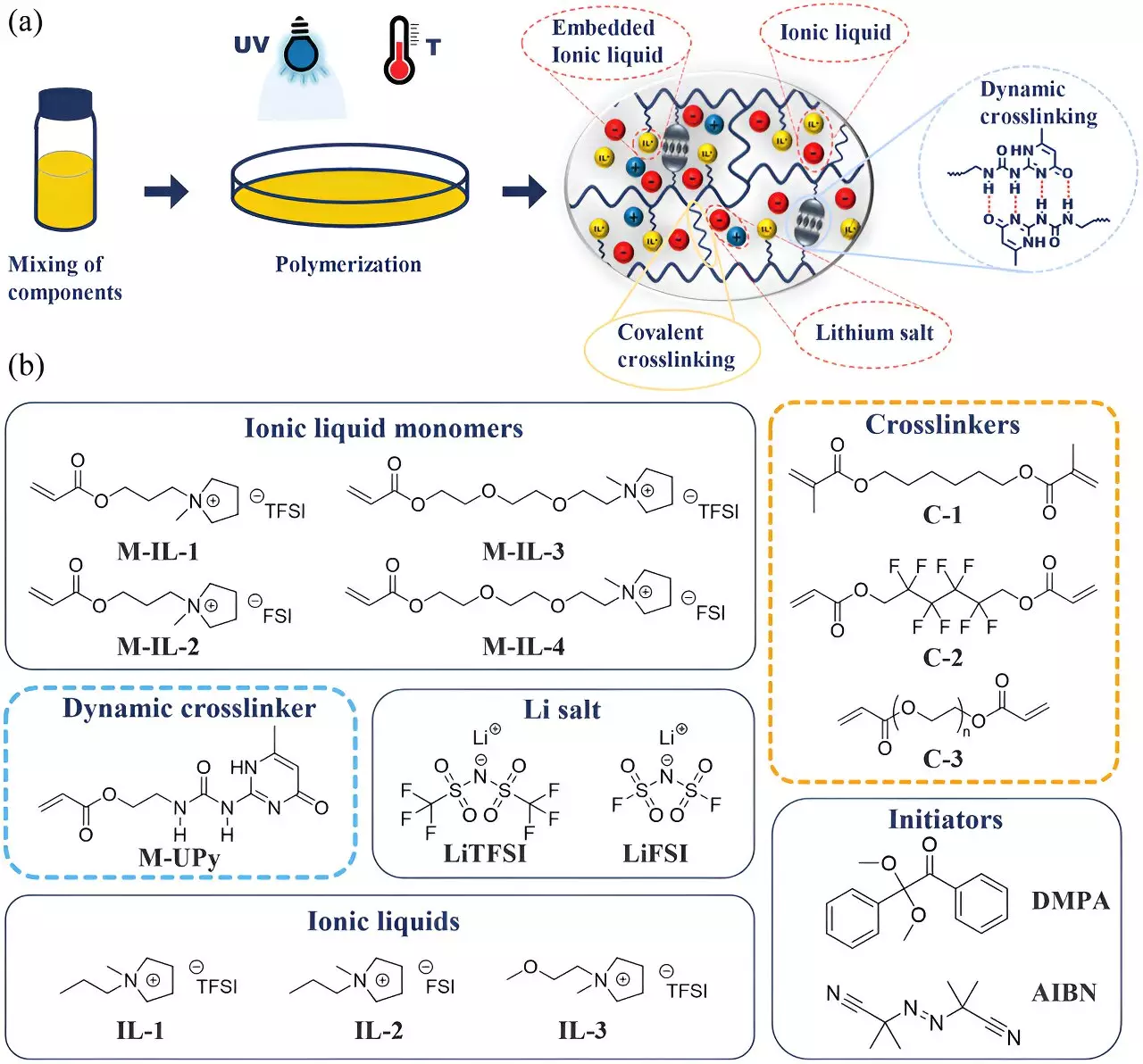Lithium-ion batteries have become an integral part of modern technology, powering everything from smartphones to electric vehicles. Their high energy density and ability to recharge quickly make them a preferred choice over traditional battery types. However, the safety concerns surrounding these batteries have emerged as a critical issue due to the volatile nature of their liquid electrolytes. In this context, an innovative gel developed by chemists at Martin Luther University Halle-Wittenberg (MLU) may offer a solution to enhance both safety and efficiency.
At the heart of lithium-ion batteries lies the electrolyte, a medium that facilitates the movement of lithium ions between the anode and cathode. Conventional electrolytes are indeed highly flammable, which poses significant risks, especially when batteries are subjected to physical stress or damage. Professor Wolfgang Binder, leading the research at MLU, points out that the integrity of these electrolytes is paramount to preventing accidents, such as fires or explosions. This underscores the importance of developing safer alternative materials for battery systems, and the newly formulated gel exhibits promising characteristics to address these concerns.
The innovative gel created by MLU researchers confines the liquid electrolyte while allowing the essential ion transport to continue unimpeded. Dr. Anja Marinow elaborates that this polymer-based gel is not only fluidic in nature but also possesses the thermal stability and durability typical of solid polymer electrolytes. Historically, gel electrolytes have been employed in various applications, but the unique embedding of ionic scaffolding within the molecular structure of the gel presents a departure from standard practices. This foundational redesign is crucial, as it enables the gel to form a stabilizing surface on the electrodes, mimicking the effects seen in traditional liquid electrolyte systems.
The preliminary lab results reveal that these novel gel electrolytes significantly improve both the safety and the performance of lithium-ion batteries. Remarkably, the gel maintains structural integrity and stability at voltages exceeding 5 volts, well beyond the critical threshold of 3.6 volts associated with conventional battery designs. This increased voltage stability holds promise for powering more demanding applications, potentially leading to advancements in various sectors, such as electric vehicles and renewable energy storage. The unique gel formulation effectively bridges the gap between liquid and solid state technologies, paving the way for next-generation batteries.
In an age where environmental considerations are paramount, the sustainability of battery production and disposal cannot be overlooked. The new gel is designed to be relatively easy to recycle compared to its liquid counterparts, aligning with the broader goals of sustainable manufacturing. Efforts to integrate these gels into a circular economy framework will be vital, especially as industries are increasingly held accountable for their environmental footprints. The collaborative depth of the “BAT4EVER” project, involving multiple European partners, exemplifies the collective aspiration to innovate while prioritizing sustainability.
While initial studies indicate that the gel electrolyte holds great potential, extensive long-term testing is necessary to validate its performance over the lifespan of a battery. The establishment of the European Center for Just Transition Research and Impact-Driven Transfer (JTC) at MLU is set to enhance research efforts focusing on sustainable battery technologies and circular economies. This center promises to foster collaboration among universities, research institutions, and industry players, further propelling advancements in battery technology.
The development of the new gel electrolyte by scientists at MLU marks a significant milestone in the quest for safer, more efficient lithium-ion batteries. By addressing the persistent safety concerns associated with traditional liquid electrolytes and placing an emphasis on sustainability, this innovative technology not only stands to enhance the performance of batteries but also aligns itself with the goals of modern environmental awareness. As researchers continue to delve into the practical applications of this gel, the future of battery technology appears more promising than ever.


Leave a Reply